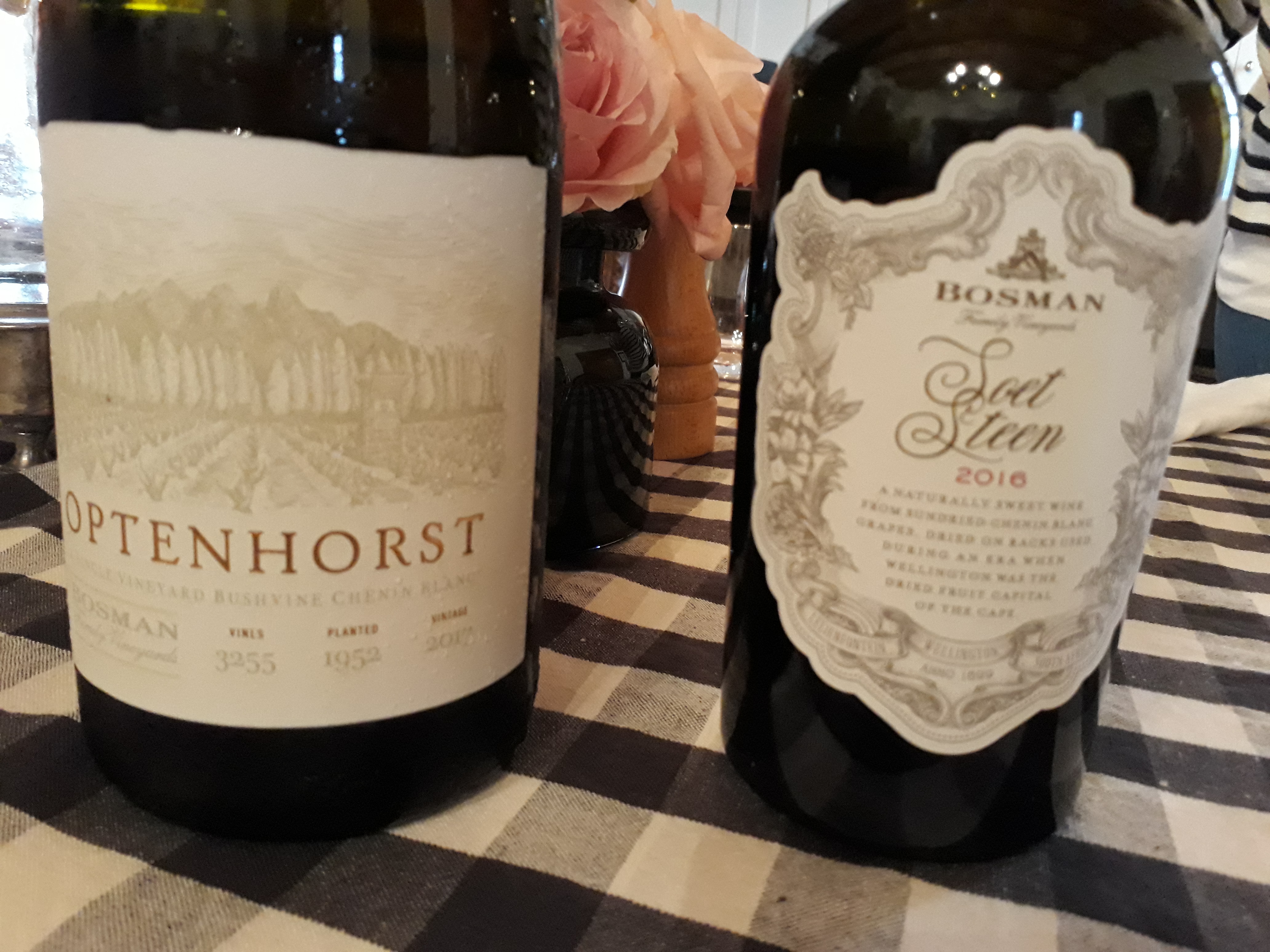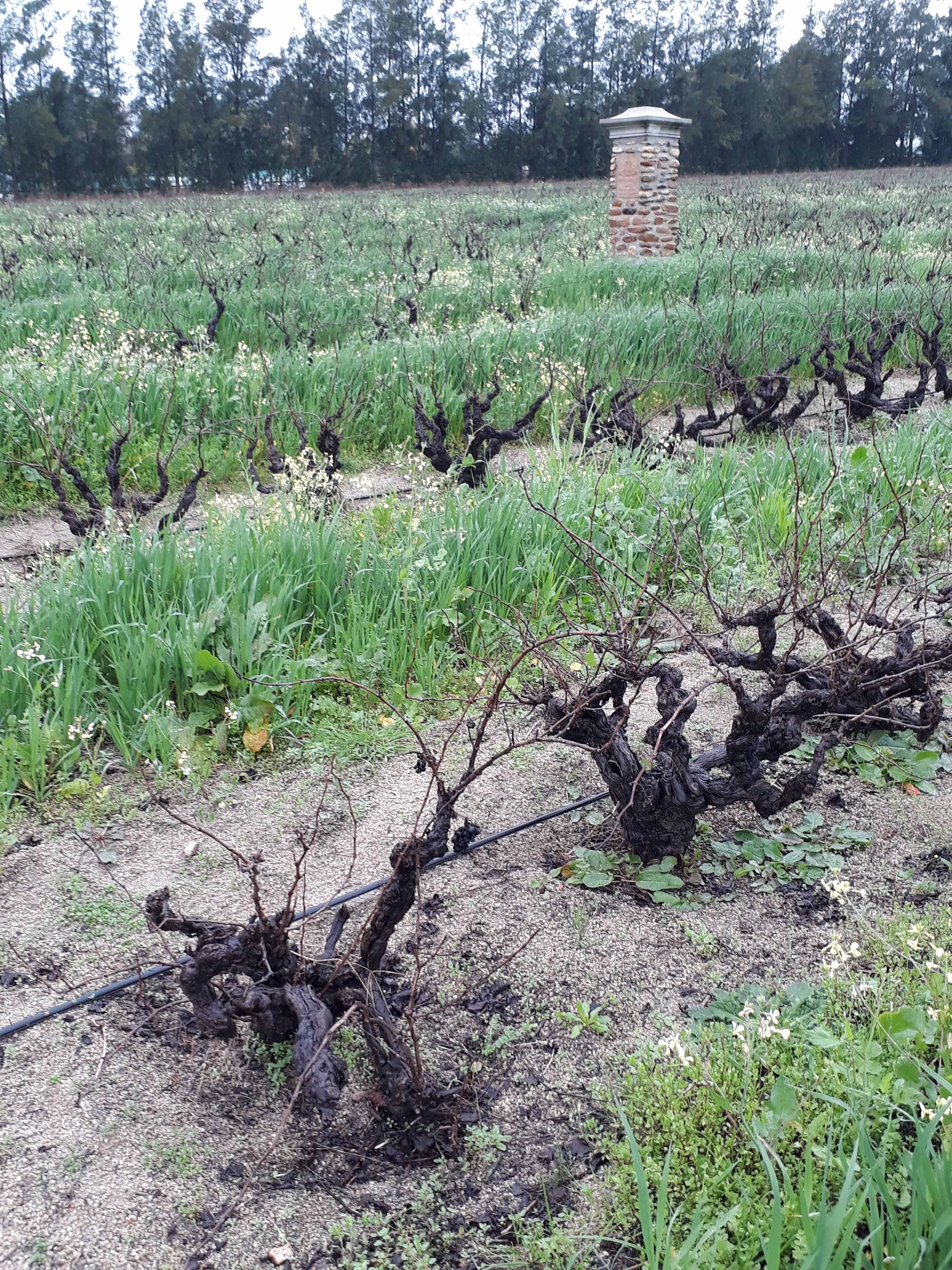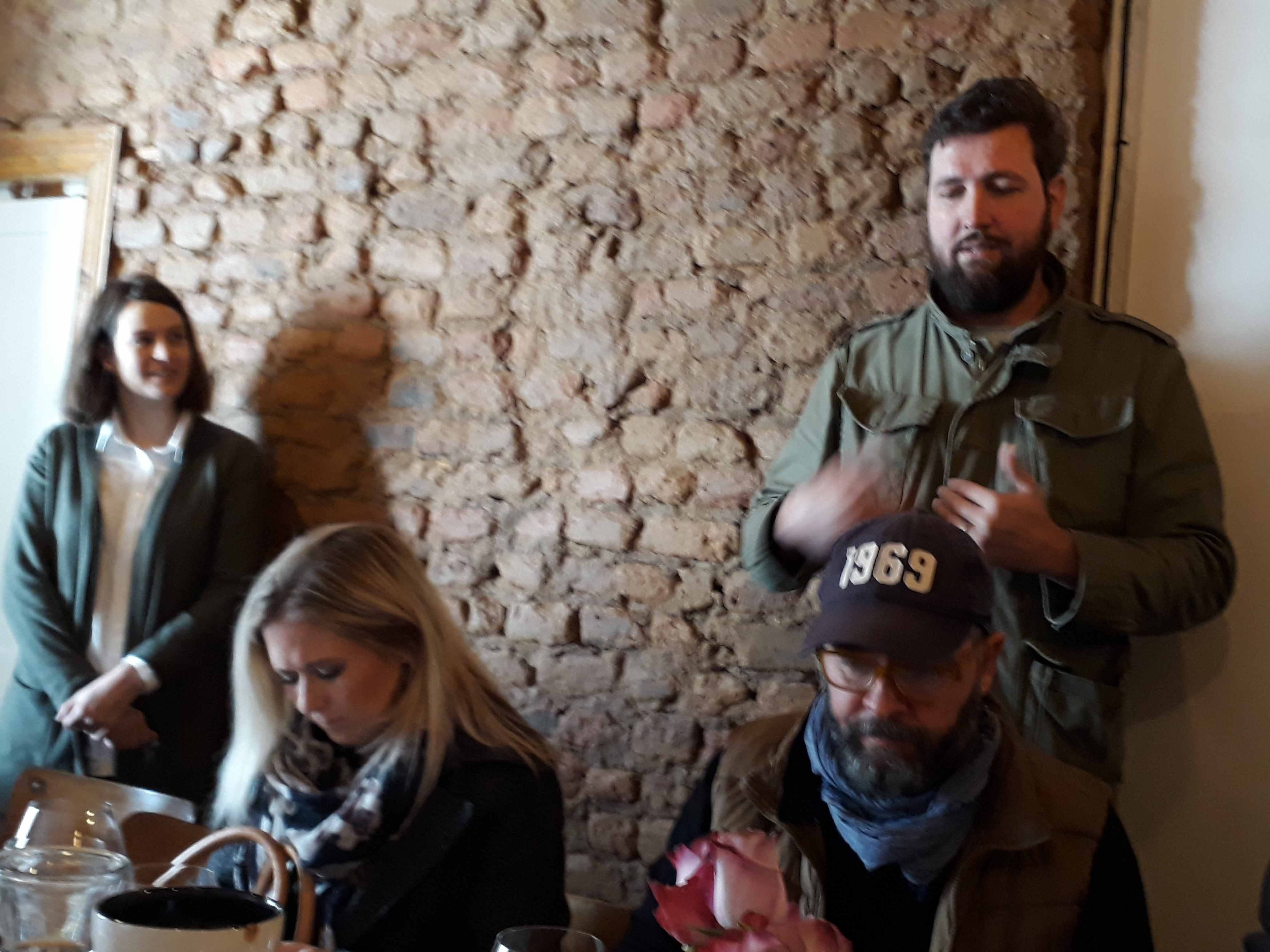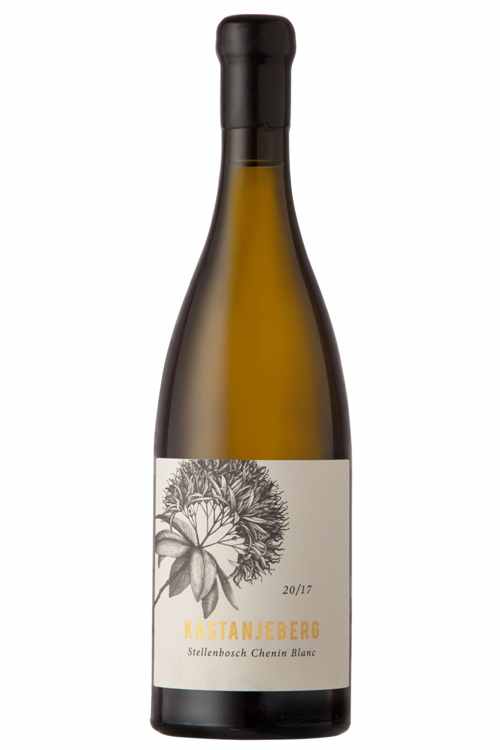Revelling in Chenin Blanc
Gnarled, twisted stumpy little vines stuck out between rows of lush bright green cover crop. Here and there was the odd gap or an obviously younger vine being cultivated. Planted in 1952 this block of Chenin Blanc is just one of South Africa’s vinous treasures and is what creates Bosman’s highly regarded Optenhorst Chenin Blanc.

Same grape, different execution – Optenhorst old vine Chenin and the sweet wine made from grapes dried before pressing.
It was supposed to be ripped out in 2007 but winemaker Corlea Fourie pleaded its case. “We’re fairly certain it’s a massal selection with a variety of clones and rootstocks all interplanted,” Fourie said.
She was part of a group of Chenin focussed folks who had just returned from the Chenin Blanc International Congress, held in Angers, France – and also inducted into the Confrerie Chevaliers de la Chantepleure Vouvray alongside a few other fellow South African Chenin imbongis.

Planted in 1952, the Optenhorst Chenin Blanc bushvines is the jewel in Bosman Family Vineyards’ crown.
South Africa is to host the next event in July 2021. “What can we possibly do to try and measure up to the history and tradition that they have in the Loire?” Fourie mused.
Having just read Tim Atkin’s thoughts on how South Africa’s performance on the world stage – with Chenin Blanc – had actually reinvigorated the Loire’s efforts and improved their sales, it was surprising to hear.
Can South Africa compete with the Loire’s tradition and fraternal organisations? No. But is it necessary when South African Chenin Blanc, particularly old vine Chenin, is patently thriving and reinvigorating a category that was almost moribund until 25 years ago.
I can still recall the sneers and jeers which greeted Cape Wine Master Irina von Holdt as she told others of her intention to make a “serious Chenin”. She was dubbed the Queen of Steen by some as a result... But the producers who got on board, supported by efforts such as WINE magazine’s championing of the category with the annual Chenin Blanc Challenge, had a point of difference and a uniquely marketable commodity. The wonderful diversity of Chenin Blanc that South Africa can show the world is no longer in question.
While visiting Bosman Family Vineyards in Wellington, Chenin was presented in the form of Methode Cap Classique, first made in 2008, a straight ‘standard’ offering, to the single vineyard Optenhorst, Generation 8, an intriguing “cellar project” of pet nat and finally the Soet Steen made from dessicated grapes.
A week later Swartland producers David & Nadia Sadie presented their new vintage offerings at a small gathering in Malmesbury. Alongside the well known and critically acclaimed Hoë-Steen and Skaliekop 2018’s is a new – meagre – offering: Plat’bos. Like the Optenhorst, it’s off certified heritage single vineyard bushvines, these ones grown on the flat valley floor of the Paardebosch home farm below Paardeberg’s slopes. Meagre because there are only 1 200 bottles available. It’s a rare treat to taste all three wines, each with a specific single vineyard and terroir (iron and clay rich, granite and shale soils) focus.

David and Nadia Sadie.
A day earlier, De Volkskombuis hosted the reveal of Stellenbosch Hills’ new flagship wines, a Pinotage-based red blend, Suikerboschrand, and a single vineyard Chenin, Kastanjeberg. While more than a little nervous to be selling a Chenin for R285 a bottle, winemaker James Ochse is justifiably proud of being able to offer single vineyard wines from what used to be a large producer co-operative cellar.

Taking its name from the chestnut trees once plentiful in the Cape is Stellenbosch Hills’ Kastanjeberg Chenin Blanc.
“It gives us the opportunity to shine a light on the very nucleus of our vineyard quality. While both (wines) are made from vineyards that consistently produce quality fruit, they comprise grape varieties grounded in South African heritage.
“They stand out for being Stellenbosch wines – but also quality South African wines.”
South Africa might not be able to induct visitors into a Confrerie but there is undoubtedly an informal local confraternity of love for this grape and belief in its versatility – be it from Wellington, Swartland or Stellenbosch. And it is precisely this diversity of offering of Chenin Blanc that will be the drawcard for international visitors to the conference in 2021. Methode Cap Classique, pet nat, sweet desserts, single vineyard, old vine, regionally expressive wines, wines that tell the story of South Africa and its heritage – in one grape.
- Fiona McDonald